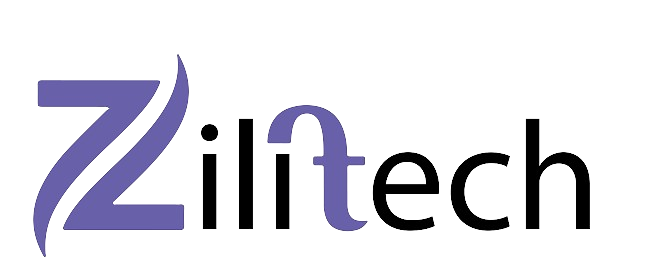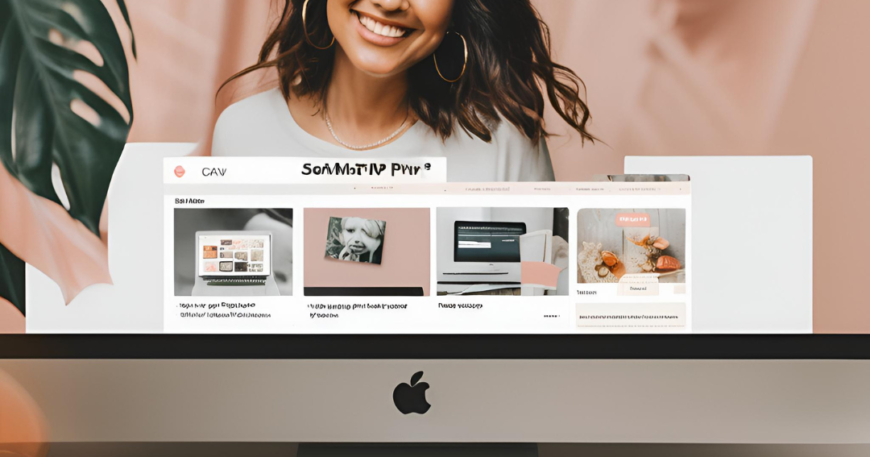Introduction
So, you’ve got a blog. Maybe it started as a hobby, a way to share your thoughts or expertise with the world. But now, you’re wondering: Can I actually make money from this? The answer is a resounding yes! Monetizing your blog can turn it from a passion project into a lucrative business. Let’s dive into the many ways you can start making money from your blog.
Understanding Blog Monetization
What Is Blog Monetization?
Blog monetization is the process of generating revenue from your blog. This can be through various means such as advertising, selling products, or offering services. Essentially, it’s about turning your blog traffic into cash flow.
Why Monetize Your Blog?
Monetizing your blog allows you to earn money doing something you love. Whether it’s a side hustle or a full-time gig, it can provide financial rewards and the freedom to work on your own terms.
Choosing the Right Niche
Popular Niches for Monetization
Not all niches are created equal when it comes to monetization. Some of the most profitable niches include:
- Personal Finance: Tips on saving money, investing, and managing finances.
- Health and Wellness: Fitness, nutrition, and mental health.
- Lifestyle: Travel, fashion, and personal development.
- Technology: Gadgets, software reviews, and tech news.
- Food: Recipes, cooking tips, and food reviews.
Finding Your Unique Angle
Your blog’s niche should align with your passions and expertise. What unique perspective or skill can you bring to the table? Your distinctive angle will help you stand out in a crowded market.
Building a Strong Foundation
Setting Up Your Blog
Before you can start making money, you need to have your blog set up properly:
- Choose a reliable hosting provider.
- Install a user-friendly content management system (CMS) like WordPress.
- Select a professional theme that aligns with your niche.
- Set up essential plugins for SEO, security, and performance.
Creating Quality Content
Content is king in the blogging world. High-quality, engaging, and informative content is crucial for attracting and retaining readers. Ensure your posts are well-researched and add value to your audience.
Growing Your Audience
Without an audience, monetization is impossible. Use social media, SEO, and networking to grow your readership. Engage with your audience through comments, emails, and social media to build a loyal community.
Effective Monetization Strategies
Affiliate Marketing
Affiliate marketing involves promoting products or services and earning a commission on sales made through your referral links. Here’s how to get started:
- Join affiliate programs relevant to your niche.
- Promote products in your blog posts.
- Use call-to-action buttons and banners to drive clicks.
Display Advertising
Display ads are visual ads placed on your blog. They can be banner ads, sidebar ads, or in-post ads. To maximize ad revenue:
- Join ad networks like Google AdSense or Mediavine.
- Place ads strategically for maximum visibility.
- Avoid overloading your site with ads to maintain a good user experience.
Sponsored Content
Sponsored content involves creating posts that promote a company’s products or services for a fee. Here’s how to do it right:
- Build relationships with brands.
- Clearly disclose sponsored content to maintain trust.
- Ensure the content aligns with your blog’s theme and offers value to your readers.
Selling Digital Products
Digital products are a great way to monetize your expertise. These can include:
- eBooks: Write about a topic you’re knowledgeable about.
- Online courses: Teach your skills to others.
- Printable: Create useful printables or planners.
Offering Services
Use your blog as a platform to offer services such as:
- Consulting: Offer your expertise to individuals or businesses.
- Freelancing: Provide writing, design, or other skills.
- Coaching: Help others achieve their goals through personalized coaching sessions.
Maximizing Ad Revenue
Choosing Ad Networks
Selecting the right ad network can significantly impact your earnings. Some popular options include:
- Google AdSense: Easy to use, good for beginners.
- Mediavine: Higher earnings but requires a minimum of 50,000 sessions per month.
- AdThrive: Best for high-traffic blogs with at least 100,000 monthly pageviews.
Optimizing Ad Placement
Ad placement can make or break your ad revenue. Tips for effective placement:
- Above the fold: Place ads where users can see them without scrolling.
- Within content: Embed ads within your posts for better engagement.
- Sidebar and footer: Utilize these areas for additional ads without disrupting the reading experience.
Using Ad Management Tools
Ad management tools help you optimize and automate ad placement. Consider using:
- Ad Inserter: Plugin for managing ads in WordPress.
- Google Ad Manager: Advanced tool for managing and optimizing ad campaigns.
Leveraging Affiliate Marketing
Selecting Affiliate Programs
Choose affiliate programs that are relevant to your blog’s niche and offer products your audience will love. Research programs like:
- Amazon Associates: A wide range of products with varying commissions.
- ShareASale: Access to many different companies and products.
- CJ Affiliate: Offers partnerships with large brands.
Writing Affiliate Content
Create compelling content that naturally incorporates affiliate links:
- Product reviews: Write honest reviews highlighting the pros and cons.
- How-to guides: Show how products can solve specific problems.
- Comparison posts: Compare similar products to help readers make informed decisions.
Tracking and Optimizing Performance
Monitor your affiliate marketing efforts to see what works and what doesn’t:
- Use tracking tools like Google Analytics to measure clicks and conversions.
- Optimize your content based on performance data.
- Test different strategies to see what maximizes your affiliate earnings.
Creating and Selling Digital Products
Types of Digital Products
Consider offering a variety of digital products:
- eBooks: Share your knowledge in a downloadable format.
- Courses: Create comprehensive online courses.
- Templates: Offer useful templates for business or personal use.
Pricing Your Products
Pricing can be tricky. Ensure your prices reflect the value provided while remaining competitive:
- Research competitors to set a baseline.
- Consider offering discounts for new customers.
- Test different pricing models to find what works best.
Marketing Your Products
Promote your digital products through:
- Email campaigns: Send newsletters to your subscribers.
- Social media: Use platforms like Facebook, Instagram, and Twitter.
- Guest blogging: Write guest posts on popular blogs to reach new audiences.
Offering Services on Your Blog
Identifying Services to Offer
Think about services that align with your expertise and audience needs:
- Writing: Offer blog writing or copywriting services.
- Design: Provide graphic or web design services.
- Consulting: Offer business or personal consulting.
Setting Up a Service Page
Create a dedicated page on your blog outlining your services:
- Include detailed descriptions of each service.
- Add testimonials from previous clients.
- Make it easy for visitors to contact you with a form or email address.
Promoting Your Services
Promote your services through various channels:
- Blog posts: Write about your services and how they can benefit your readers.
- Social media: Share updates and success stories.
- Networking: Connect with potential clients through industry events and forums.
Building an Email List
Importance of an Email List
An email list is a powerful tool for engaging with your audience and promoting your products or services. It allows you to communicate directly with your readers and drive traffic back to your blog.
Growing Your Subscriber Base
Encourage visitors to subscribe by:
- Offering lead magnets like free eBooks or exclusive content.
- Using pop-up forms on your blog.
- Promoting your newsletter on social media.
Monetizing Through Emails
Leverage your email list to make money by:
- Sending promotional emails about your products or affiliate offers.
- Creating exclusive content for subscribers.
- Running special discounts or limited-time offers.
Using Membership Models
Types of Membership Models
Membership models can provide recurring revenue through:
- Subscription-based content: Offer exclusive articles, videos, or courses.
- Community access: Provide access to private forums or groups.
- Premium tools: Offer advanced tools or resources.
Setting Up Membership Tiers
Create different membership tiers to cater to various audience segments:
- Basic: Access to limited content or resources.
- Premium: Full access to all content and additional perks.
- VIP: Exclusive access to personalized support or one-on-one sessions.
Retaining Members
Keep your members engaged and subscribed by:
- Regularly updating content.
- Offering members-only perks.
- Engaging with members through forums or live chats.
Exploring Alternative Monetization Methods
Crowdfunding
Crowdfunding can be a viable option for specific projects or content series. Use platforms like:
- Patreon: For ongoing support from fans.
- Kickstarter: For funding one-time projects.
Accepting Donations
If your content is valuable and free, consider asking for donations. Use tools like:
- Buy Me a Coffee: Easy way for readers to support you.
- PayPal Donate: Simple and widely recognized.
Hosting Webinars and Workshops
Offer webinars or workshops to share your knowledge and interact with your audience:
- Choose relevant topics that solve your audience’s problems.
- Charge a fee for access or offer them as part of a membership.
Legal and Ethical Considerations
Disclosure Requirements
Transparency is crucial when monetizing your blog. Always disclose:
- Affiliate links.
- Sponsored content.
- Product reviews that were paid for or provided for free.
Ethical Advertising Practices
Maintain your integrity by:
- Only promoting products you truly believe in.
- Being honest in your reviews and recommendations.
- Avoiding misleading claims or tactics.
Managing Copyright Issues
Protect your content and respect others’ rights:
- Use proper attribution for any third-party content.
- Avoid plagiarism and ensure your content is original.
- Consider copyrighting your own work to prevent unauthorized use.
Tracking and Analyzing Performance
Using Analytics Tools
Analytics tools help you understand your audience and improve your monetization efforts. Use:
- Google Analytics: Track website traffic and user behavior.
- SEMrush: Analyze SEO performance and competitors.
- Hotjar: Gain insights through heatmaps and user recordings.
Measuring Key Metrics
Key metrics to monitor include:
- Traffic sources: Where your visitors are coming from.
- Engagement rates: Time spent on site, page views, etc.
- Conversion rates: How well your monetization efforts are working.
Adjusting Your Strategies
Use your analytics data to refine and improve:
- Test different content types and monetization methods.
- Experiment with ad placements and affiliate links.
- Continuously optimize based on what works best.
Conclusion
Monetizing your blog is a journey, not a sprint. It requires dedication, experimentation, and a willingness to adapt. By understanding your audience, creating valuable content, and strategically implementing monetization methods, you can turn your blog into a profitable venture. Remember, it’s about finding what works for you and your readers. Happy blogging and good luck!
FAQs
- How long does it take to start making money from a blog?
- It varies, but typically it can take several months to a year to start seeing significant income, depending on your niche, traffic, and monetization strategies.
- Do I need a large audience to monetize my blog?
- Not necessarily. While a large audience can help, even a small, engaged audience can be profitable with the right strategies.
- Can I monetize a blog about any topic?
- Almost any topic can be monetized, but some niches are more lucrative than others. It’s important to choose a niche with both audience interest and monetization potential.
- What are the most common mistakes bloggers make when trying to monetize?
- Common mistakes include overloading the blog with ads, not disclosing affiliate links, and neglecting quality content in favor of monetization efforts.
- Is it necessary to invest money in my blog to make it profitable?
- While it’s possible to start a blog on a budget, investing in quality hosting, tools, and marketing can significantly boost your monetization efforts and overall success.




